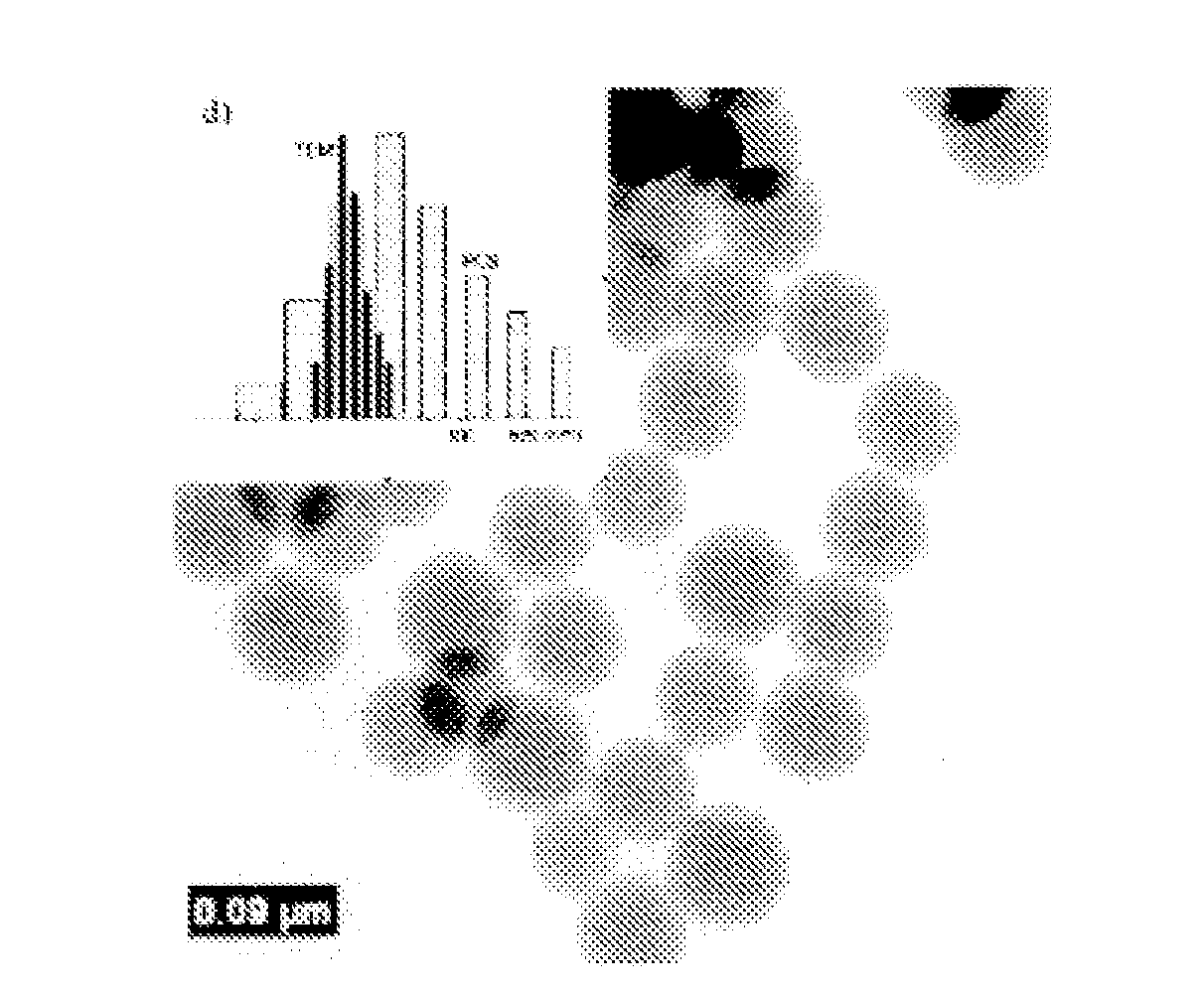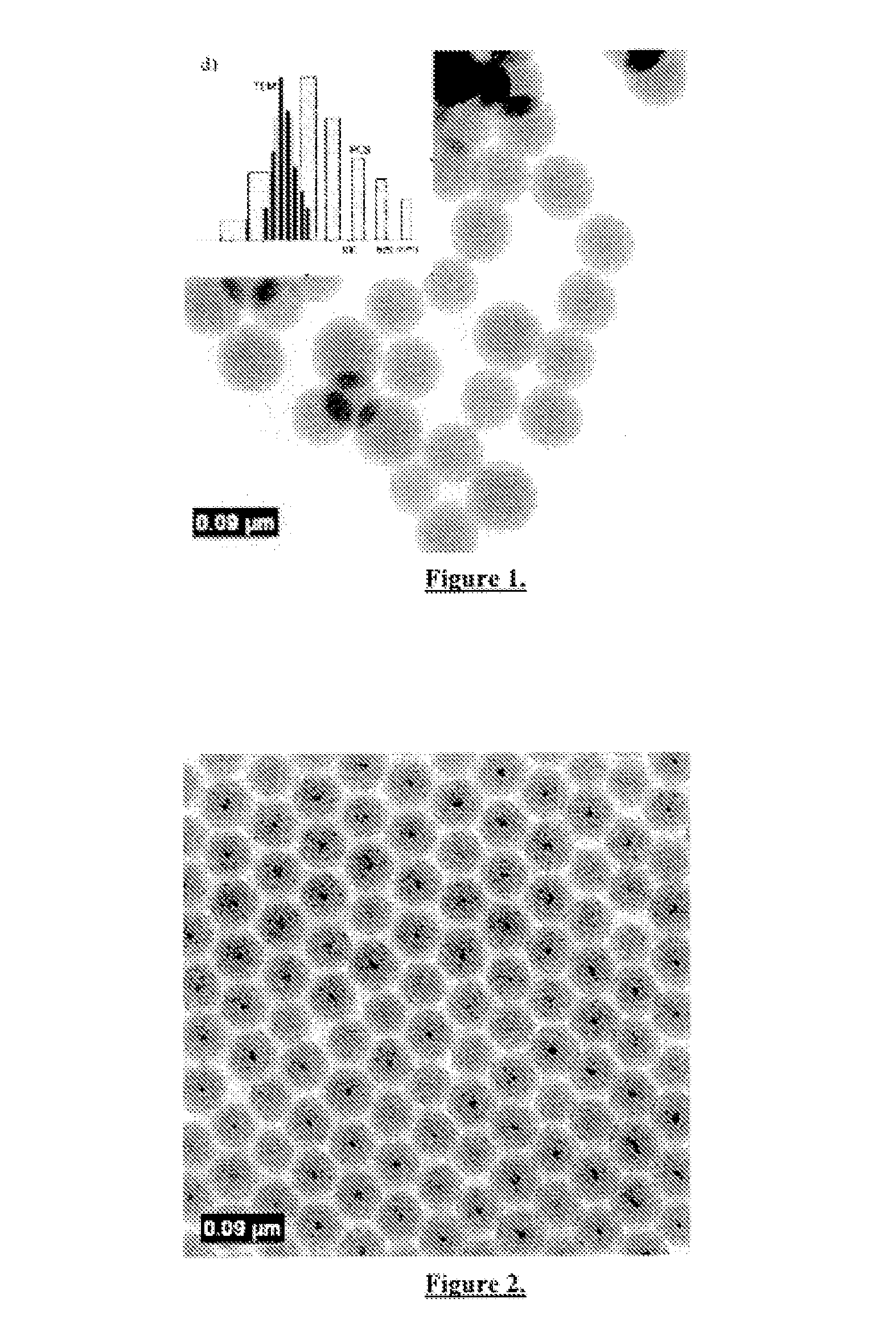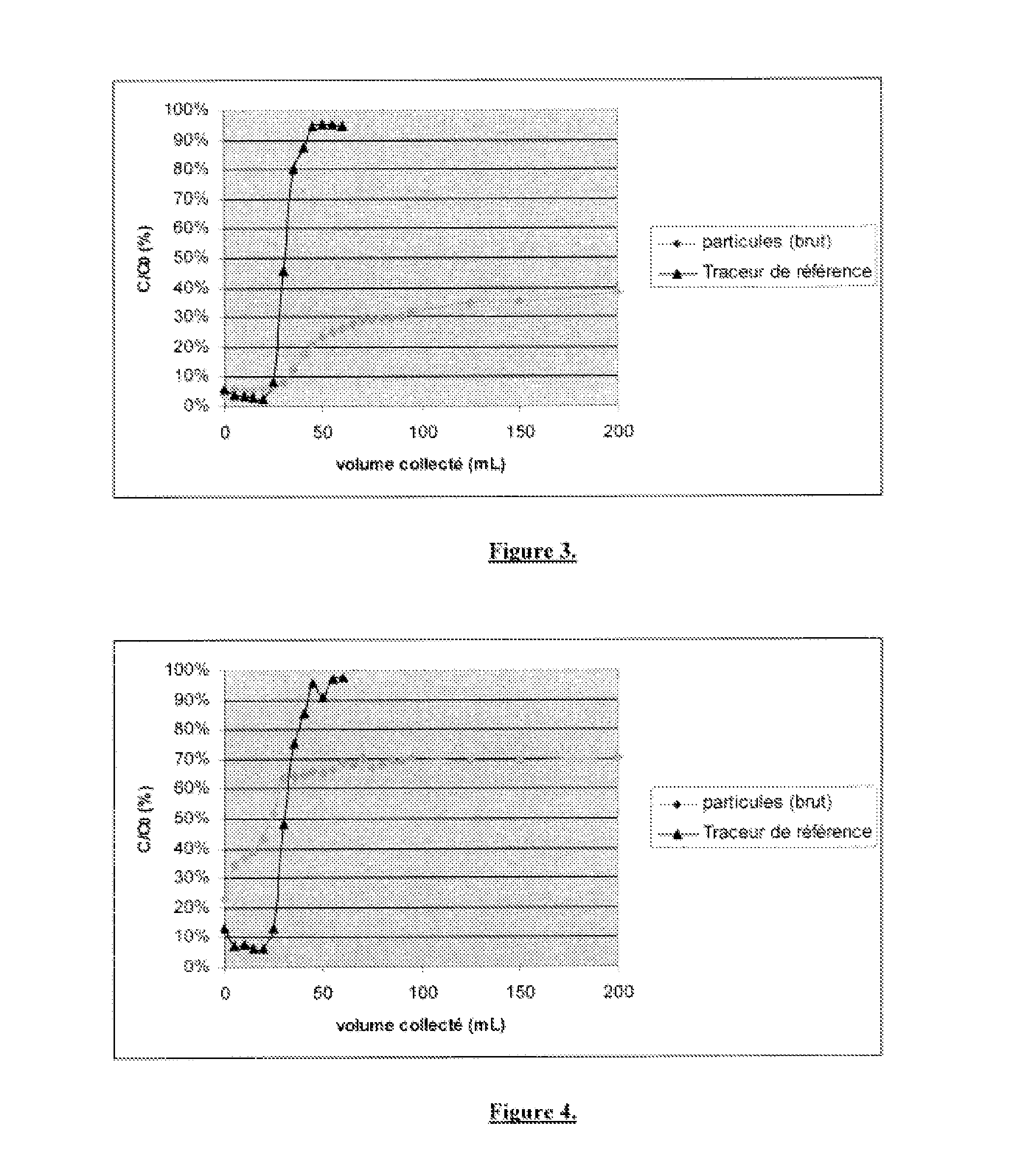Use of nanoparticles for labelling oil field injection waters
a technology of oil field injection water and nanoparticles, which is applied in the direction of radiation measurement, optical radiation measurement, spectral modifiers, etc., can solve the problems of not being able to multi-label or repeat the same labeling, requiring a rather complex and expensive process, and difficult to detect nacl chloride used as tracer
- Summary
- Abstract
- Description
- Claims
- Application Information
AI Technical Summary
Benefits of technology
Problems solved by technology
Method used
Image
Examples
example 1
Particles Prepared According to the Example of Preparation 1; Naked SiO2 Surface
[0134]This example is a test of diffusion through a porous core cartridge according to preparation 8. The porous core is of the DU30804 type and has the following characteristics:[0135]Nature of the material: sandstone[0136]Dimensions: 4 to 5 cm in diameter; 10 to 13 cm in length[0137]Permeability: 250 to 500 mDa[0138]Porosity: 20%
[0139]The suspension of nanoparticles has been obtained according to preparation 9. The flow rate imposed by the pump is 20 mL / hour. The fractions recovered at the exit of the rock have a volume of 5 mL.
[0140]FIG. 3 shows the comparative curves of diffusion between the reference tracer (yellow) and the nanoparticles prepared according to the example of preparation 1.
example 2
Particles Prepared According to the Example of Preparation 5; SiO2 Surface Grafted with Propyl-Methylphosphonates Groups
[0141]This example is a test of diffusion through a porous core cartridge according to preparation 8. The porous core is of the DU30804 type and has the following characteristics:[0142]Nature of the material: sandstone[0143]Dimensions: 4 to 5 cm in diameter; 10 to 13 cm in length[0144]Permeability: 250 to 500 mDa[0145]Porosity: 20%
[0146]The suspension of nanoparticles has been obtained according to preparation 9. The flow rate imposed by the pump is 20 mL / hour. The fractions recovered at the exit of the rock have a volume of 5 mL.
[0147]FIG. 4 shows the comparative curves of diffusion between the reference tracer (yellow) and the nanoparticles prepared according to the example of preparation 5.
example 3
Particles Prepared According to the Example of Preparation 6; SiO2 Surface Grafted with Polyethylene-Glycol, O-Methyl Groups
[0148]This example is a test of diffusion through a porous core cartridge according to preparation 8. The porous core is of the DU30804 type and has the following characteristics:[0149]Nature of the material: sandstone[0150]Dimensions: 4 to 5 cm in diameter; 10 to 13 cm in length[0151]Permeability: 250 to 500 mDa[0152]Porosity: 20%
[0153]The suspension of nanoparticles has been obtained according to preparation 9. The flow rate imposed by the pump is 20 mL / hour. The fractions recovered at the exit of the rock have a volume of 5 mL.
[0154]FIG. 5 shows the comparative curves of diffusion between the reference tracer (yellow) and the nanoparticles prepared according to the example of preparation 6.
PUM
 Login to View More
Login to View More Abstract
Description
Claims
Application Information
 Login to View More
Login to View More - R&D
- Intellectual Property
- Life Sciences
- Materials
- Tech Scout
- Unparalleled Data Quality
- Higher Quality Content
- 60% Fewer Hallucinations
Browse by: Latest US Patents, China's latest patents, Technical Efficacy Thesaurus, Application Domain, Technology Topic, Popular Technical Reports.
© 2025 PatSnap. All rights reserved.Legal|Privacy policy|Modern Slavery Act Transparency Statement|Sitemap|About US| Contact US: help@patsnap.com



